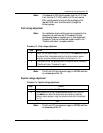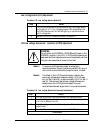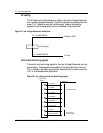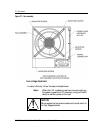
Low voltage disconnect 71
25A Switch Mode RectifierNT5C06B / C Installation and User Manual
Operation
The battery voltage is monitored by the low voltage disconnect and low
voltage alarm circuit (LVA). When the voltage drops to approximately -47 V
DC, the LVA LED lights up and the alarm is extended to the terminal block.
When the battery voltage drops to the low voltage disconnect level, the
contactor opens, disconnecting the load from the battery. This turns the
LVD LED ON and activates the low voltage disconnect alarm. When the
battery voltage rises by approximately 8 V (adjustable) above the release
level, the load is reconnected to the batteries and the alarm is cleared.
The LVD potentiometer sets the level at which the load disconnects and the
LVDR potentiometer sets the level at which the load reconnects. Test jacks
(TP1 and TP2) provide the plant discharge voltage when the 'TEST' switch is
set to NORMAL.
Test feature
The internal test feature facilitates the verification of the low voltage
disconnect, reconnect, and low voltage alarm circuitry, without disconnecting
the load.
When the panel switch is set to 'Test/Bypass' a ground signal is applied to
lock the LVD contactor and the 'TEST' potentiometer is connected in series
with the control circuit. Varying this potentiometer will affect the voltage
senses by the LVD and LVA detectors. This test voltage can be verified at
test jacks TP1 and TP2.
Signal connections
The signal connections are shown in Figure 26 of this manual (see the
“Operation” chapter of this manual for the installation of the low voltage
disconnect unit).


















